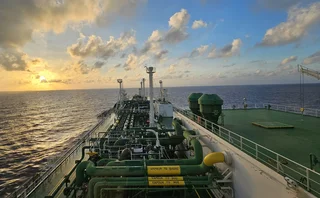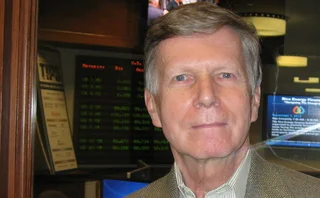CME, CBOT to merge
The 2007 merger of the two largest futures exchanges in the
The merged exchange hopes to be the leading market for trade in all major asset classes and will give wider access to benchmark exchange-traded derivatives based on
The merger between CME and CBOT will create one of the world’s most liquid marketplaces, with average daily trading volume approaching 9 million contracts per day, representing approximately $4.2 trillion in notional value. It will be the world’s leading derivatives clearing facility based on volume.
Earlier this year CME announced a deal with Nymex making it the exclusive electronic trading services provider for Nymex’s energy futures and options contracts through 2016. The agreement encompassed side-by-side trading of Nymex standard-sized and Nymex “miNY” energy futures contracts for crude oil, natural gas, heating oil and gasoline with Nymex’s floor-based products during open outcry trading hours and when the Nymex trading floor is closed.
Once completed the merger will see Terrence Duffy, currently chairman of CME, become chairman of the combined organization. Current CBOT chairman Charles Carey will become vice-chairman of the combined organization while Craig Donohue, chief executive officer of CME, will become chief executive officer of the combined organization.
The merger is expected to shave off $125 million annually in costs by the end of the second full year after closing, which is due mid 2007 pending approval from regulators.
This merger follows on the heels of IntercontinentalExchange’s $1billion purchase of the New York Board of Trade which provides both entities with mutually beneficial access to each others’ trading and clearing technologies, a broadening of product choice and an overlap in customers.
More on Risk management
LNG trading strategies set to change amid major market shifts
The global LNG market is on the brink of significant changes set to alter trading dynamics and market behaviour, say analysts
Why commodity finance is ripe for stablecoin
Digital currency brings cost efficiencies to financing, but its real benefit to commodity firms lies in making huge pools of new capital available, write Jean-Marc Bonnefous and Ronan Julien
US shutdown leaves commodity traders without key data
Commodity traders are ‘flying blind’ without Commitment of Traders reports
Energy Risk at 30: Learning from the past
Energy Risk looks back at the seminal events and developments that have shaped today’s energy markets
Past disasters can prove the value of energy risk management
Analysing failures and losses at energy firms can underscore the value of consistent, high-quality risk management
How quants shaped the modern energy markets
The business models of today’s utility firms are built on quantitative analysis, but the introduction of these techniques in the 1990s was far from smooth
Interview: Vince Kaminski
Market veteran Vince Kaminski discusses the biggest risks to energy firms today and whether risk teams can ever prove their value
Mounting risk prompts refocus on integrated energy risk management
Energy firms are facing heightened risk due to shifting geopolitics, climate change and the energy transition. As market, credit and enterprise risks ramp up, the need for improved integrated risk management is growing, say risk managers







